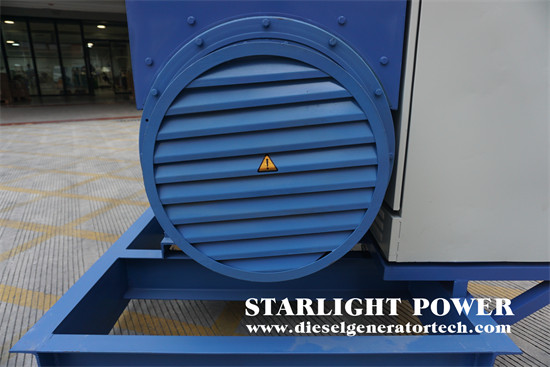In modern society, noise pollution has become one of the four major pollution sources. With the improvement of productivity, people pay more and more attention to noise control in production and life. We know that the noise emitted by the generator during operation is usually very loud, which will inevitably affect the surrounding environment. To control the noise, we must first understand the noise pollution point of the generator. The following starlight will give you a detailed analysis.

1. Exhaust noise
Exhaust noise is a high-temperature, high-speed pulsating airflow noise, which is the part with the largest energy and the most components in the generator noise. It is much higher than the intake noise and the mechanical noise radiated by the body, and is the most important part of the total noise of the generator. Its fundamental frequency is the firing frequency of the generator. The main components of exhaust noise are: low-frequency pulsation noise caused by periodic smoke exhaust, air column resonance noise in the exhaust pipe, Helmholtz resonance noise of the cylinder, high-speed airflow through the valve gap and the tortuous pipe. The noise, eddy current noise and the regeneration noise generated by the exhaust system under the excitation of the pressure wave in the pipeline, etc., with the increase of the airflow speed, the noise frequency increases significantly.
2. Mechanical noise
Mechanical noise is mainly caused by the vibration or mutual impact caused by the periodic changes of gas pressure and motion inertial force during the operation of the moving parts of the generator. The most serious ones are: the noise of the piston crank connecting rod mechanism, the gas distribution The noise of the mechanism, the noise of the transmission gear, the mechanical vibration and noise caused by the unbalanced inertial force. Strong mechanical vibrations can travel long distances outdoors through the foundation, and then generate noise through the radiation on the ground. The noise of this kind of structure propagates far, the attenuation is reduced, and it is difficult to isolate it once it is formed.
3. Combustion noise
Combustion noise is the structural vibration and noise produced by diesel fuel during combustion. The sound pressure level of combustion noise in the cylinder is very high. However, most parts in the generator structure have high rigidity, and their natural vibration frequencies are mostly in the middle and high frequency region. The peak cylinder pressure level in the high frequency band cannot be transmitted smoothly, while the cylinder pressure level in the middle and high frequency band is relatively easy to transmit.
4. Cooling fan and exhaust noise
The fan noise of the unit is composed of eddy current noise and rotating noise. The rotating noise is caused by the periodic disturbance of the air flow cut by the blades of the fan; the eddy current noise is generated when the airflow is separated on the rotating blade section, caused by the viscosity of the gas. Eddy currents radiate an unstable flow noise. The exhaust noise, airflow noise, fan noise, and mechanical noise are all radiated through the exhaust channel.
5. Inlet noise
Diesel generator sets need to have enough fresh air supply during normal operation, on the one hand to ensure the normal operation of the generator, on the other hand to create good heat dissipation conditions for the generator set, otherwise the generator set cannot guarantee its performance. The air intake system of the unit basically includes the air intake channel and the air intake system of the generator itself. The air intake channel of the unit must be able to allow the fresh air to enter the machine room smoothly, and the mechanical noise and airflow noise of the unit can also be radiated through this air intake channel. Outside the engine room.
6. Generator noise
Generator noise includes electromagnetic noise caused by the magnetic field pulsation between the stator and rotor, and mechanical noise caused by the rotation of rolling bearings.
The noise generated by the operation of the generator is very harmful, especially it will cause serious damage to human health. Users should reduce the noise of the generator through some noise reduction methods. Starlight suggested that noise reduction and noise pollution can be reduced by means of sound insulation, wall sound absorption, noise reduction treatment of air inlets and outlets, and installation of mufflers in the exhaust pipe.
Starlight Power was founded in 1974 and is one of the earliest manufacturers of generators and diesel generator sets in China. If you want get more information, please feel free to send email to [email protected] we will pay highly attention on your question.
Copyright © Guangxi Dingbo Generator Set Manufacturing Co., Ltd. All Rights Reserved | Sitemap
Update cookies preferences